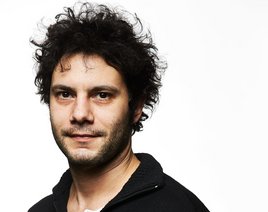MIC-Tea Time: Optical assessment of tissue and biofluid mechanics

MIC-Node: MAOI
Speaker: Dr. Kareem Elsayad
The ability of of tissue and biofluids to maintain and modulate mechanical properties (such as the elasticity and viscosity) is essential for physiological function, with the majority of diseases and their onset associated with changes therein. Measuring these in a rapid, minimally-invasive and affordable manner is thus of much interest both for potential prognostic/diagnostic applications as well as for better understanding the mechanistic origins of diseases, developing therapies and assessing their efficacy. One approach for measuring mechanical properties involves the analysis of spectral signatures in the scattered light from a probing laser, which in addition to information on the elastic and viscous properties can also be used to yield information on structural properties, hydration, and the abundance of solid constituents. We have shown this may be useful for applications as diverse as assessing the severity of COVID-19 infection and degenerative muscle diseases. Making use of various optical tricks which allow us to work with low sample laser exposure, we have developed high-throughput instruments and compact hand-held probes that pave the way towards direct application in the clinic. We have benchmarked these against current contact-based means of assessing mechanical properties noting the at times distinct and unique information they can obtain. We are also currently in the process of creating a full body human anatomical mechanical atlas obtained from such optical measurements, which will catalogue and provide a reference for physiological and pathological values of all tissue and biofluids, and provide an important stepping stone towards standardization and expanding applications for prognostics/diagnostics.
The talk will discuss:
- The importance of mechanical properties of tissue and biofluids and their relation to disease
- Existing technologies & emerging light scattering approaches for assessing mechanical properties of biomedically relevant matter
- Results from several studies
- Challenges & limitations, the importance of standardization, and future outlook
Biosketch:
Kareem Elsayad runs the Laboratory for High-resolution optical Microspectroscopy Applications at the Division of Anatomy/Center for Cell Biology and Anatomy, where they develop and apply novel optical micro-spectroscopy techniques for assessing the physical properties of biomedical and biological relevant matter. They work with diverse samples including those from body donors and patient biopsies, and often closely with clinicians to identify promising translational applications. Dr. Elsayad is a physicist by training having received his Masters in Physics in the UK and PhD in the USA (both in condensed matter physics). He subsequently worked in optics as a postdoc, and subsequently headed the Advanced Microscopy Facility, both at the Vienna Biocenter. Here together with his team he explored new optical microscopy and spectroscopy approaches for life-science research, before realizing that some of the techniques may have medical applications and relocating to the Medical University. His interests are centered on developing and applying optical techniques for understanding the physical properties of biological systems, and looking into how these can be translated for medical applications. He is the recipient of numerous national and international grants that supported his research in this direction, serves on various scientific boards and as president of the recently established International BioBrillouin Society (which supports research into one particular light-scattering technique that can be used for extracting mechanical information in biological tissue).
Registration:
Please register under mic@meduniwien.ac.at
